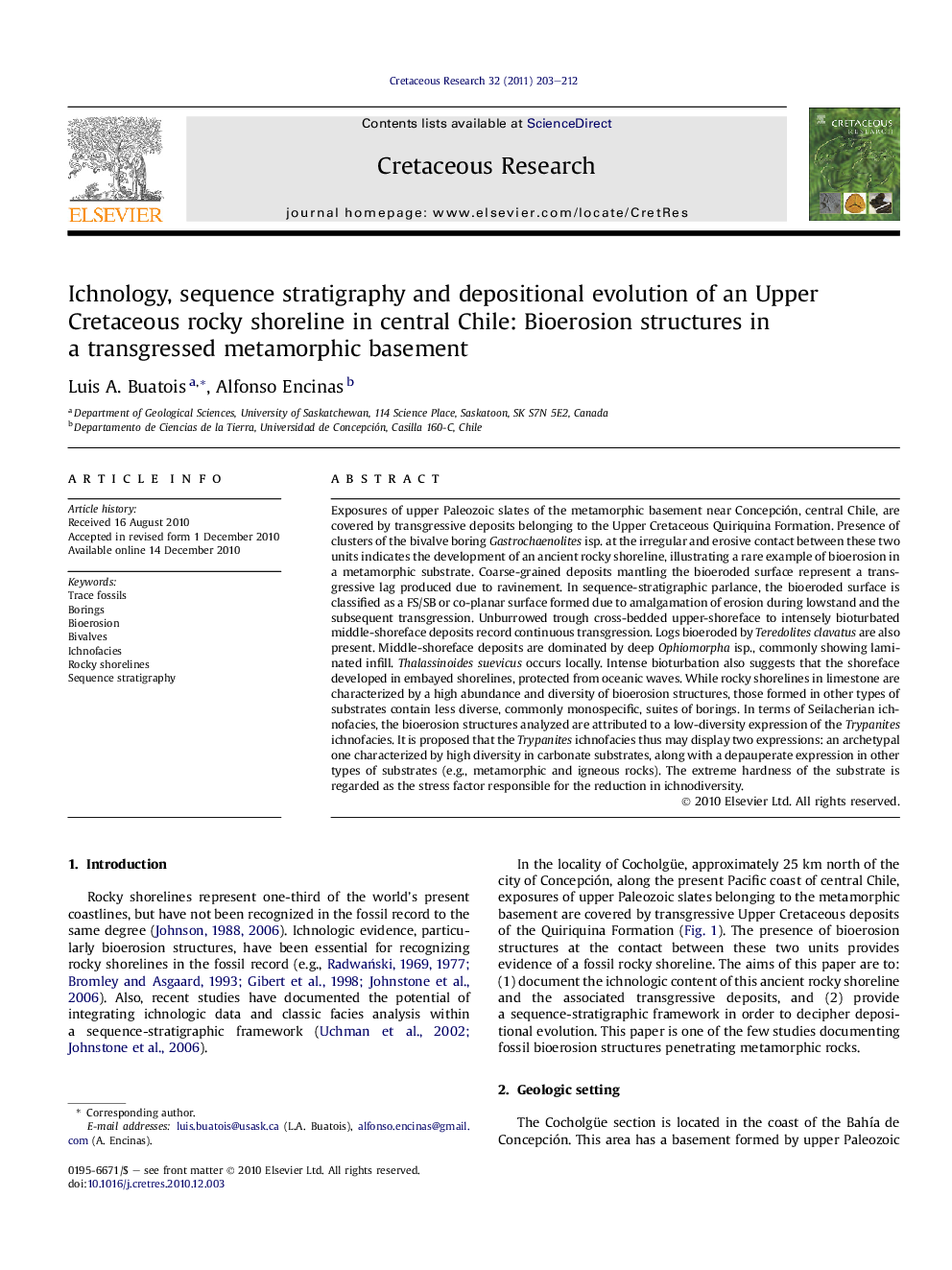| کد مقاله | کد نشریه | سال انتشار | مقاله انگلیسی | نسخه تمام متن |
|---|---|---|---|---|
| 6448512 | 1359916 | 2011 | 10 صفحه PDF | دانلود رایگان |
عنوان انگلیسی مقاله ISI
Ichnology, sequence stratigraphy and depositional evolution of an Upper Cretaceous rocky shoreline in central Chile: Bioerosion structures in a transgressed metamorphic basement
دانلود مقاله + سفارش ترجمه
دانلود مقاله ISI انگلیسی
رایگان برای ایرانیان
کلمات کلیدی
موضوعات مرتبط
مهندسی و علوم پایه
علوم زمین و سیارات
فسیل شناسی
پیش نمایش صفحه اول مقاله

چکیده انگلیسی
Exposures of upper Paleozoic slates of the metamorphic basement near Concepción, central Chile, are covered by transgressive deposits belonging to the Upper Cretaceous Quiriquina Formation. Presence of clusters of the bivalve boring Gastrochaenolites isp. at the irregular and erosive contact between these two units indicates the development of an ancient rocky shoreline, illustrating a rare example of bioerosion in a metamorphic substrate. Coarse-grained deposits mantling the bioeroded surface represent a transgressive lag produced due to ravinement. In sequence-stratigraphic parlance, the bioeroded surface is classified as a FS/SB or co-planar surface formed due to amalgamation of erosion during lowstand and the subsequent transgression. Unburrowed trough cross-bedded upper-shoreface to intensely bioturbated middle-shoreface deposits record continuous transgression. Logs bioeroded by Teredolites clavatus are also present. Middle-shoreface deposits are dominated by deep Ophiomorpha isp., commonly showing laminated infill. Thalassinoides suevicus occurs locally. Intense bioturbation also suggests that the shoreface developed in embayed shorelines, protected from oceanic waves. While rocky shorelines in limestone are characterized by a high abundance and diversity of bioerosion structures, those formed in other types of substrates contain less diverse, commonly monospecific, suites of borings. In terms of Seilacherian ichnofacies, the bioerosion structures analyzed are attributed to a low-diversity expression of the Trypanites ichnofacies. It is proposed that the Trypanites ichnofacies thus may display two expressions: an archetypal one characterized by high diversity in carbonate substrates, along with a depauperate expression in other types of substrates (e.g., metamorphic and igneous rocks). The extreme hardness of the substrate is regarded as the stress factor responsible for the reduction in ichnodiversity.
ناشر
Database: Elsevier - ScienceDirect (ساینس دایرکت)
Journal: Cretaceous Research - Volume 32, Issue 2, April 2011, Pages 203-212
Journal: Cretaceous Research - Volume 32, Issue 2, April 2011, Pages 203-212
نویسندگان
Luis A. Buatois, Alfonso Encinas,